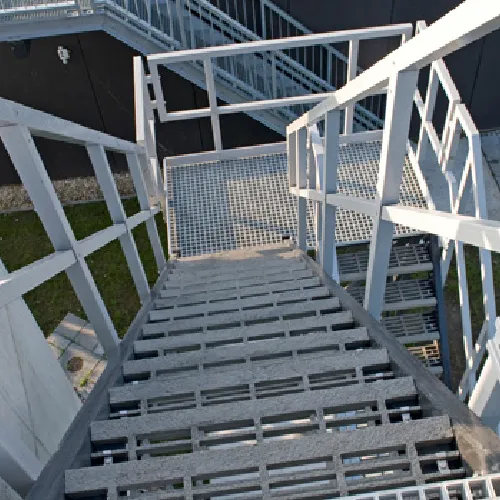loading...
- No. 9, Xingyuan South Street, Dongwaihuan Road, Zaoqiang County, Hengshui, Hebei, China
- admin@zjcomposites.com
- +86 15097380338
- Welcome to visit our website!
Innovative Applications of FRP Piles in Modern Construction Techniques
The Role of FRP Piles in Modern Construction
In the realm of modern construction, the use of fiber-reinforced polymer (FRP) piles is gaining significant traction. As the industry evolves, the demand for materials that can withstand harsh environmental conditions while providing structural integrity continues to rise. FRP piles have emerged as a compelling solution, combining lightweight, strength, and corrosion resistance that traditional materials like concrete and steel often struggle to deliver.
What are FRP Piles?
FRP piles are constructed from composites that consist of a polymer matrix reinforced with fibers such as glass, carbon, or aramid. The unique properties of these materials make FRP piles particularly advantageous for specific applications, especially in environments that are prone to chemical exposure or that experience substantial moisture, such as marine and coastal constructions.
Advantages of Using FRP Piles
1. Corrosion Resistance One of the most significant advantages of FRP piles is their outstanding resistance to corrosion. Traditional steel piles can be severely affected by moisture and salts, leading to deterioration over time. FRP piles, on the other hand, do not corrode, which enhances their lifespan and reduces maintenance costs significantly.
2. Lightweight Compared to their concrete and steel counterparts, FRP piles are considerably lighter. This reduction in weight facilitates easier handling and installation, and it can also lower transportation costs. The lightweight nature of FRP piles allows for the use of smaller machinery during installation, further streamlining the construction process.
3. High Strength-to-Weight Ratio Despite being lightweight, FRP piles exhibit a remarkable strength-to-weight ratio. This characteristic allows them to support significant loads while being easier to manage. Engineers appreciate this feature when designing foundations and load-bearing structures.
4. Flexibility in Design FRP piles can be produced in a variety of shapes and sizes, providing engineers with the flexibility needed to meet the specific requirements of different projects. This adaptability is particularly beneficial in complex designs where traditional materials may not suffice.
frp piles

5. Environmental Sustainability With the construction industry increasingly moving towards sustainable practices, FRP materials offer an eco-friendly alternative. Many FRP composites can be manufactured with recyclable materials, and their longevity translates to reduced resource consumption over time.
Applications of FRP Piles
FRP piles are gaining popularity in various sectors of construction, including marine structures, bridge foundations, and piers. Their ability to endure harsh weather conditions and resist degradation makes them ideal for environments where traditional materials would fail quickly. In addition, their use is not limited to coastal applications; they are also suitable for ground applications, especially where soil conditions could lead to the corrosion of metal piles.
Challenges and Considerations
While FRP piles offer numerous benefits, there are also challenges to consider. The initial cost of FRP materials can be higher than traditional options, which may deter some projects. Additionally, as a relatively new technology, there can be a lack of familiarity and standards within the industry, leading to hesitance among engineers and contractors.
Furthermore, the mechanical properties of FRP materials can vary greatly depending on the fiber types used and the manufacturing processes involved. This variability means that careful consideration and rigorous testing are necessary to ensure that the chosen FRP solution meets the project's structural requirements.
Conclusion
In conclusion, FRP piles represent a versatile and innovative solution for modern construction needs, particularly in challenging environmental conditions. Their unique benefits, from corrosion resistance to lightweight design, make them an attractive option for various applications. As the construction industry continues to seek more effective and sustainable materials, the utilization of FRP technology is likely to expand, ultimately enhancing the durability and longevity of structures around the world.
-
The Rise of FRP Profiles: Strong, Lightweight, and Built to LastNewsJul.14,2025
-
SMC Panel Tanks: A Modern Water Storage Solution for All EnvironmentsNewsJul.14,2025
-
GRP Grating: A Modern Solution for Safe and Durable Access SystemsNewsJul.14,2025
-
Galvanized Steel Water Tanks: Durable, Reliable, and Ready for UseNewsJul.14,2025
-
FRP Mini Mesh Grating: The Safer, Smarter Flooring SolutionNewsJul.14,2025
-
Exploring FRP Vessels: Durable Solutions for Modern Fluid HandlingNewsJul.14,2025
-
GRP Structures: The Future of Lightweight, High-Performance EngineeringNewsJun.20,2025
